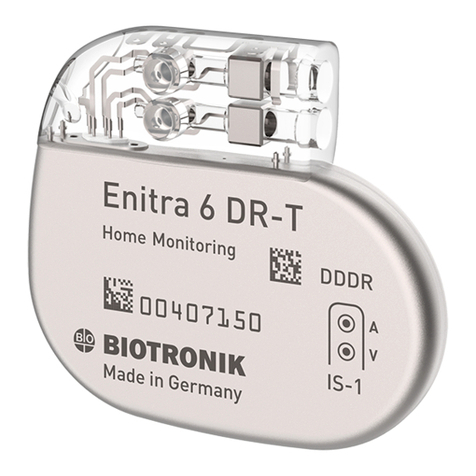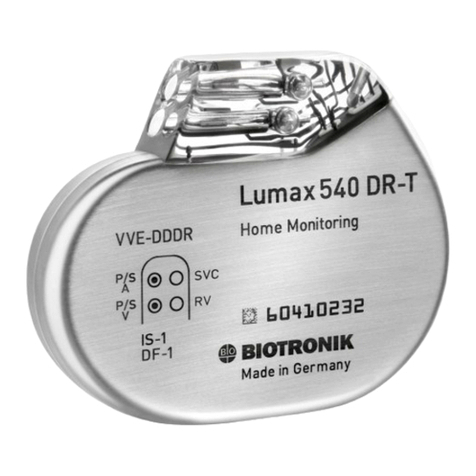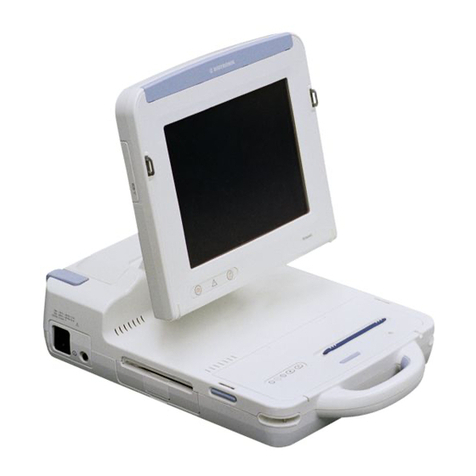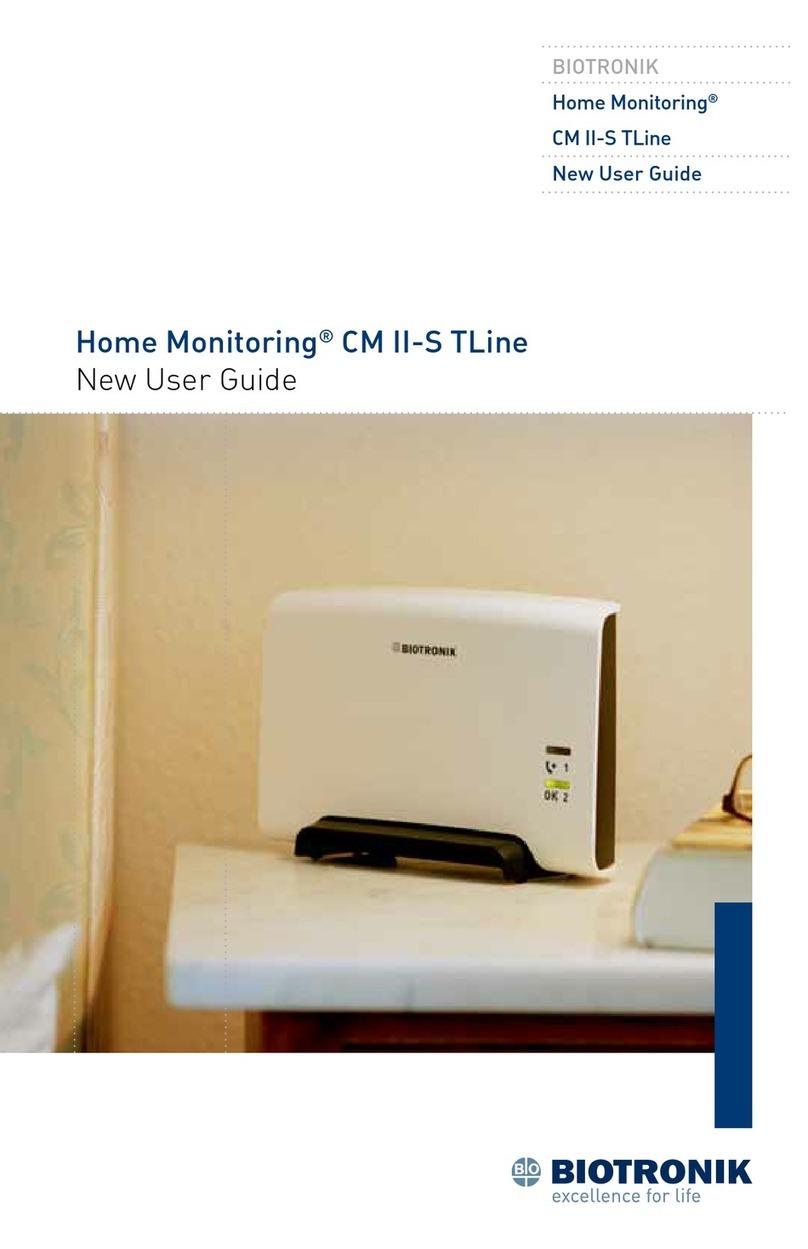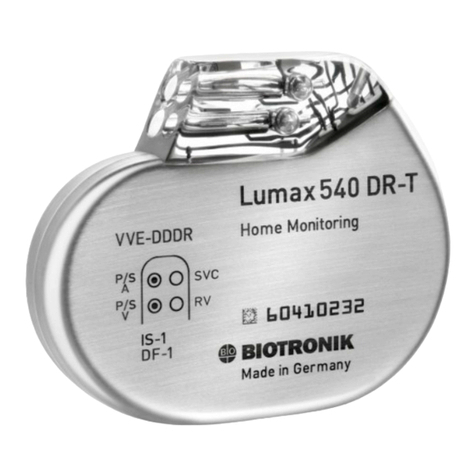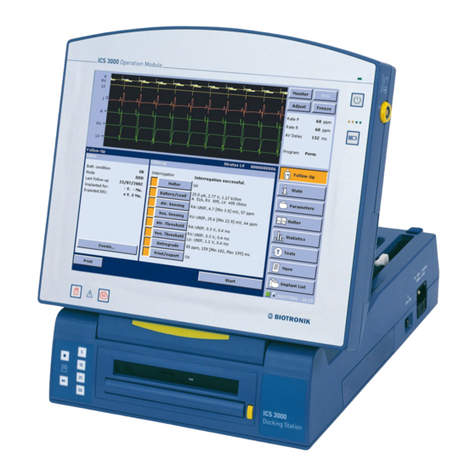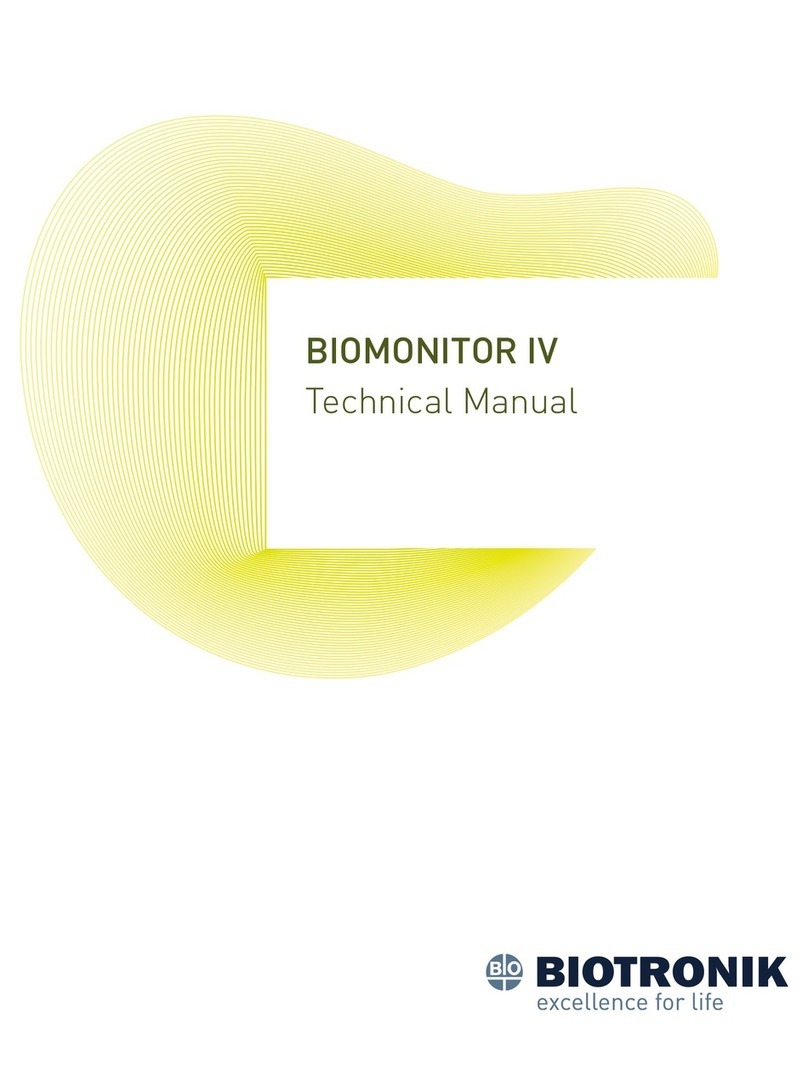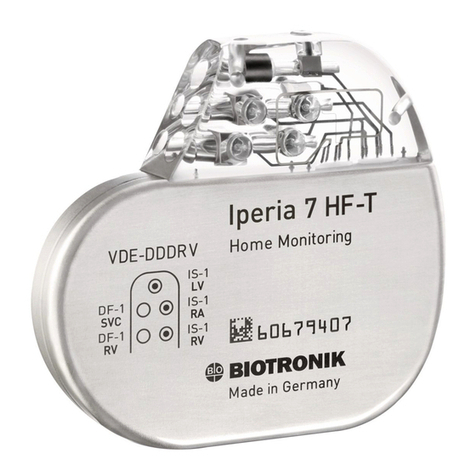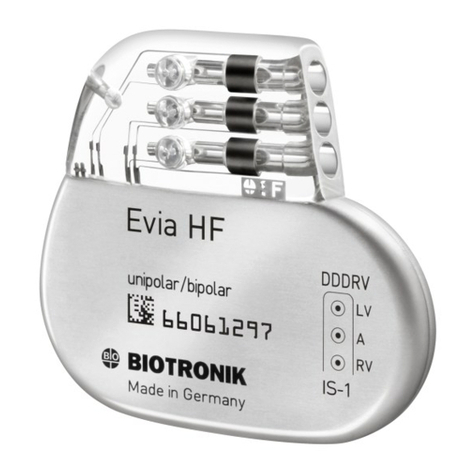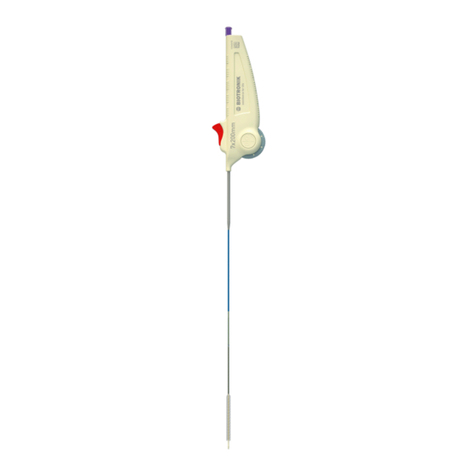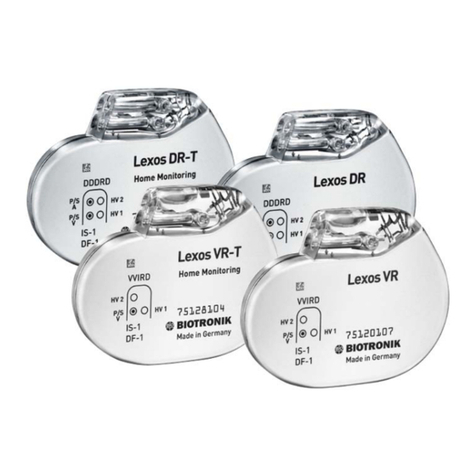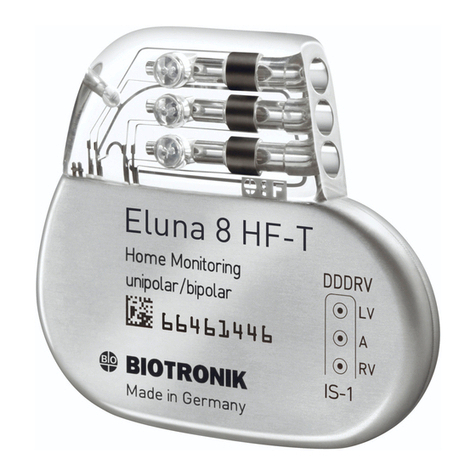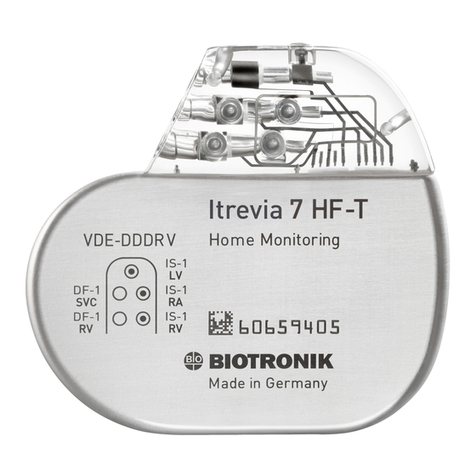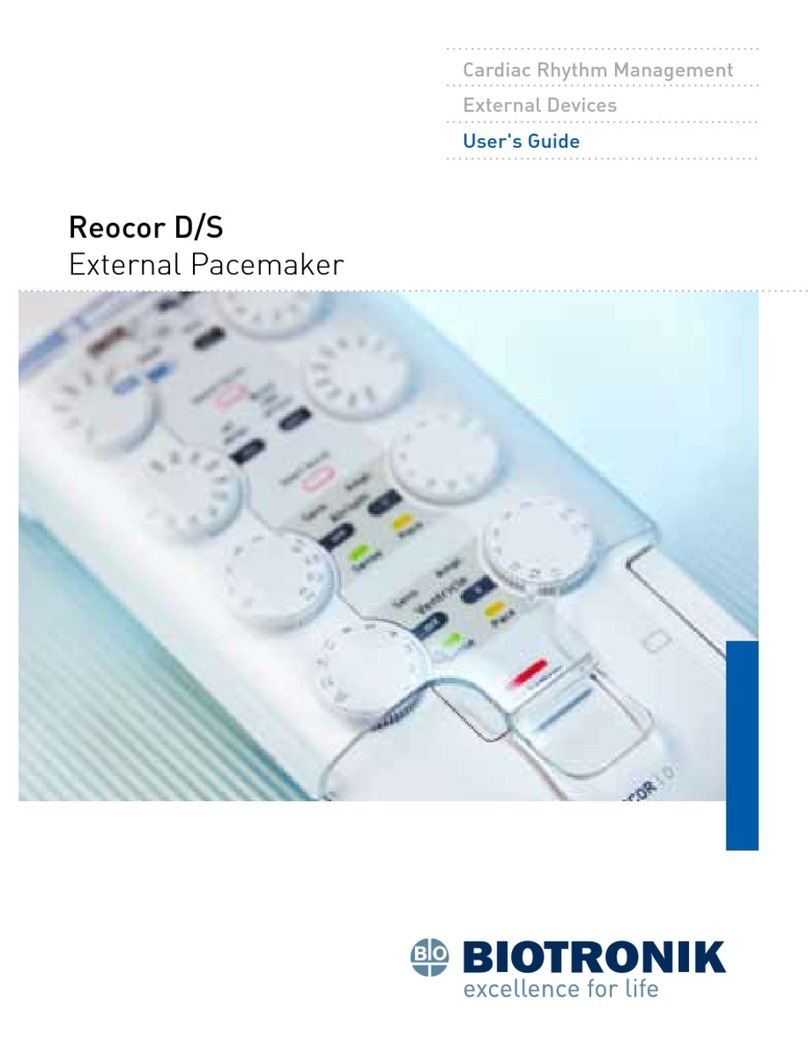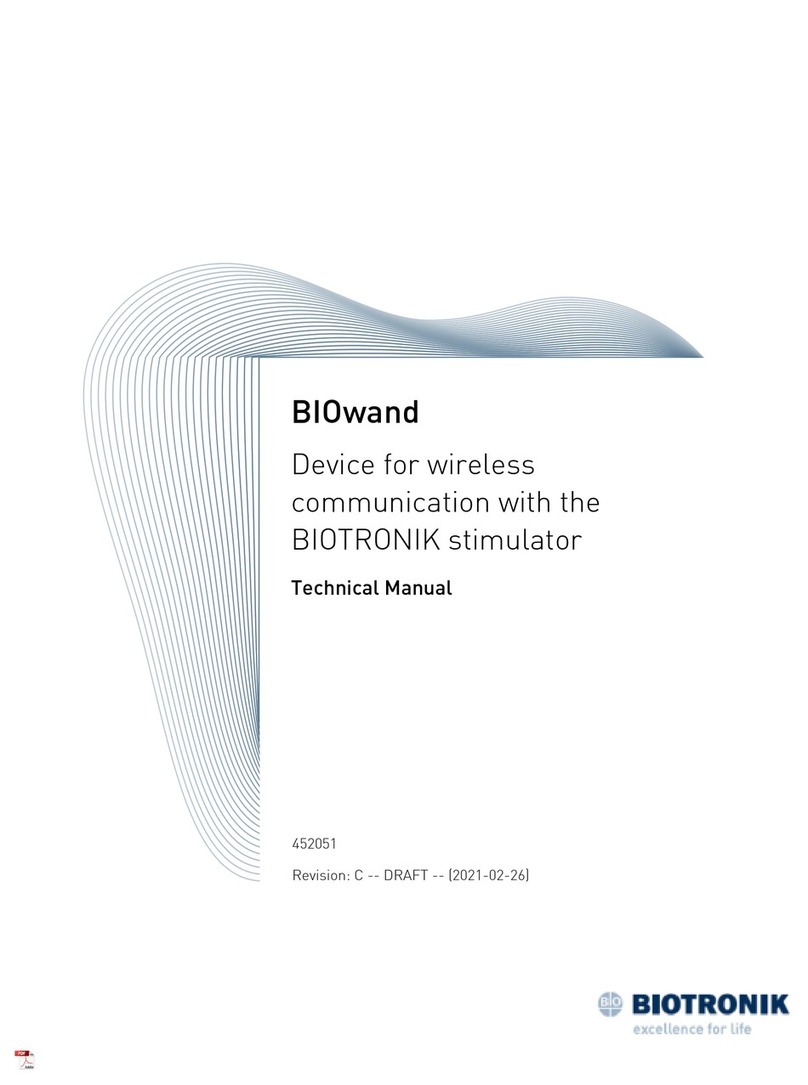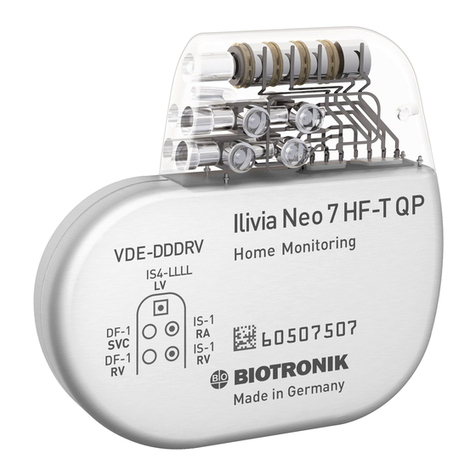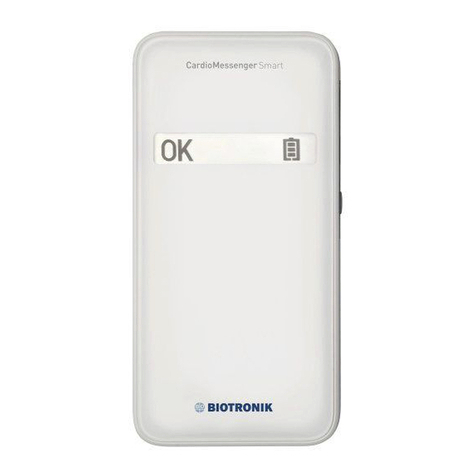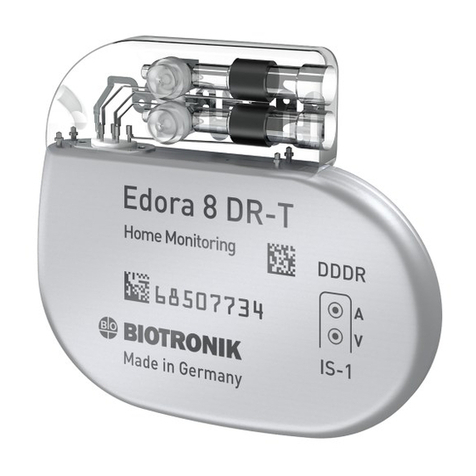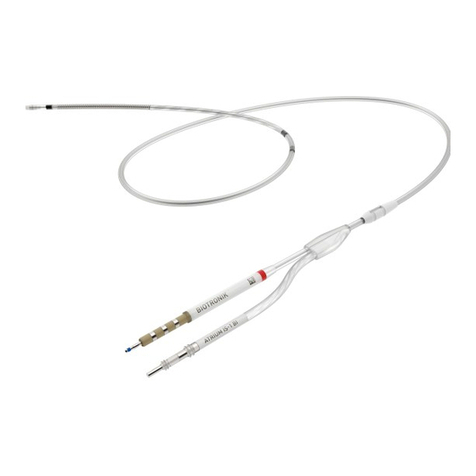
Product Description
Intended Medical Purpose
6
Atrial therapy provides the additional clinical benefit of terminating atrial stable tachyarrhythmia after
detection. The associated performance outcome for this clinical benefit is defined as successful
termination of atrial tachyarrhythmia using antitachycardia pacing.
Indications
Dual-chamber pacemakers are indicated to treat symptomatic bradycardia with antibradycardia pacing.
Triple-chamber pacemakers are indicated for patients
• who suffer from chronic heart failure with reduced left ventricular ejection fraction (LVEF ≤ 35%)
and dyssynchrony (defined as QRS duration ≥130 ms).
• with heart failure and reduced LVEF (< 40%) who have a high-degree atrioventricular (AV) block
with high ventricular pacing demand.
• with chronic heart failure and symptomatic atrial fibrillation with uncontrolled heart rate who are
candidates for AV junctional ablation (irrespective of the QRS duration).
The most common indications for permanent pacemaker implantation are sinus node dysfunction
(SND) and symptomatic high-grade atrioventricular (AV) block.
Beside the most common indications mentioned above the following conditions are included but are not
limited to:
• Chronic bifascicular block
• Neurocardiogenic syncope and hypersensitive carotid sinus syndrome
• Hypertrophic cardiomyopathy
• Pacing to detect and terminate tachycardia
• Patients with congenital heart disease
Patients who demonstrate hemodynamic benefit through maintenance of AV synchrony should be
considered for dual chamber pacing modes. Dual chamber modes are specifically indicated for
treatment of conduction disorders that require both restoration of heart rate and AV synchrony such as
AV nodal disease, diminished cardiac output or congestive heart failure associated with conduction
disturbances, and tachyarrhythmias that are suppressed by chronic pacing.
In patients with bradycardia-tachycardia variant of SND programming of atrial ATP may be considered.
Rate-adaptive pacing with pacemakers is indicated for patients exhibiting chronotropic incompetence
and who would benefit from increased pacing rates concurrent with physical activity.
Physiological pacing (e.g. HBP or LBB(A)P) is indicated to maintain or improve the cardiac
hemodynamic function by optimizing the physiological cardiac contraction pattern in particular for
patients with increased pacing demand.
Generally approved differential diagnostic methods, indications, and recommendations for pacemaker
therapy apply to BIOTRONIK devices. See the current guidelines of cardiology associations for
guidance. We recommend observing the indications published by the European Society of Cardiology
(ESC). This also applies to the guidelines published by the Heart Rhythm Society (HRS), the American
College of Cardiology (ACC), the American Heart Association (AHA), the German Cardiac Society
(Deutsche Gesellschaft für Kardiologie, Herz- und Kreislaufforschung, (DGK)) and other national
cardiology associations.
Depending on the patient`s anatomy, the pacemakers are implanted in the pectoral or abdominal
region.
Intended Patient Group
The pacemakers are intended for adults (including immuno-compromised or elderly patients). The
pacemakers are intended for pregnant patients but the need to limit fluoroscopy in pregnant women
may complicate device implantation or the patient should be resorted to another imaging method.
The pacemakers are intended for children who are suited to bear an implant of the physical dimensions
of a pacemaker. Significant technical challenges may arise due to the growth of the patient and the size
of the used leads.

